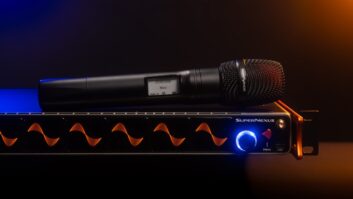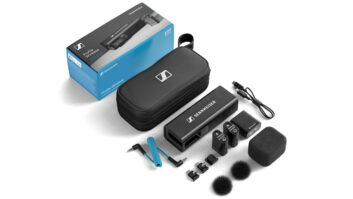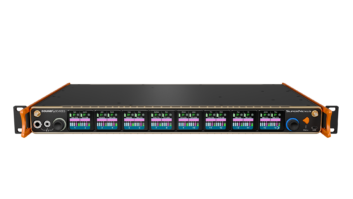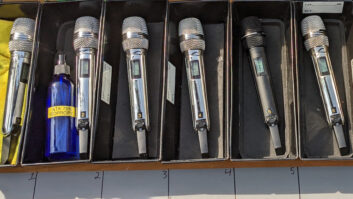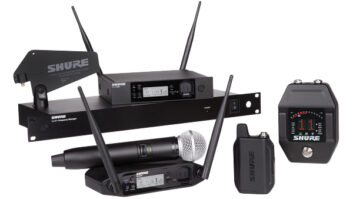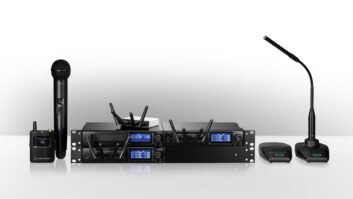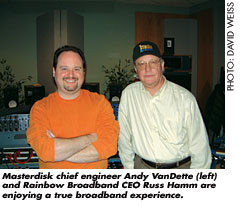
“High-speed networking” ceased to be a buzz phrasesometime during the end of the last millennium, but its significance inpro audio is growing. There is an increasing need for recordingstudios, mastering suites, post houses and DVD producers to securelymove media at speeds faster than DSL, T1 or old-fashioned FedEx —and still keep costs down. Fortunately, viable solutions to quicklymove huge, uncompressed audio and video files are emerging in the formof wireless broadband networks, opening up new business models in theprocess.
At Masterdisk (New York City), the difficulties to achievesufficient bandwidth were typical: Broadband solutions like DSL and T1are too slow, and no direct fiber connection is coming to theirbuilding anytime soon. “So much of our work is the kind thatcan’t be done fast enough at any price,” mastering engineer AndyVanDette says. “On the production side, all of the major labelshave electronic delivery and there are lots of international clientswho are using that instead of courier or FedEx to send memasters.”
Masterdisk had experienced the delays in trying to upload a typical600MB CD master or 11.5GB DVD project to a remote server via T1, withthroughput taking several hours. Several years ago, the expectedsolution was fiber’s huge bandwidth capacity, but the logistics andcosts of digging up streets to connect buildings and businesses to themain fiber pipeline (the dreaded “last mile”) provedprohibitive in most cases.
After a recent experimental collaboration with Rainbow Broadband (www.rainbowbroadband.com), a new networking ventureled by audio pioneer Russ Hamm, Masterdisk may have found an answerwith a wireless broadband network based on radio frequency (RF)transmission. “I’ve seen networking as the next thing for quite awhile,” Hamm comments. “But it wasn’t until a year ago,when Pro Tools|HD came in, tape started to really disappear andpeople like Andy got into posting files to servers with FTP[file-transfer protocol] that I thought the industry would actually beable to interact over networks.”
To set up the test, Hamm needed another building in Manhattan with afiber connection and a clear line of sight between that building andMasterdisk to establish the broadband wireless connection between theMotorola Canopy RF transceivers set up at both locations. Hamm foundhis fiber connection at One Penn Plaza, 12 blocks and four avenues awayfrom Masterdisk, and set his gear up on the 56th floor. Operating inthe license-free U-NII (Unlicensed National Information Infrastructure)and ISM (Industrial Scientific and Medial) bands at 2.4, 5.2 and 5.7GHz, Hamm encrypted his “Air-LinQ” signal with SSL (SecureSocket Layer) for security and began beaming data from an antenna atOne Penn Plaza direct to another antenna that was connected to a laptopand placed in the window of an office at Masterdisk.
The result was exactly what Rainbow expected and Masterdisk hadhoped for: a true broadband wireless connection that took hours, notmonths, to set up and no messy construction. “Streaming video isthe ultimate test, and here we downloaded a DVD MPEG-2 file from OnePenn Plaza and watched it live on a Windows Media 9 player,” saysHamm. “We also did FTP transfers across the network. Anuncompressed .WAV file of a four-minute Aretha Franklin song cameacross in under 60 seconds.”
With the fiber on the One Penn Plaza side connected to core networkslike AT&T’s, the mastered music or DVD files that Masterdisk FTPsfor client approval can be posted in a “digital workspace”behind a secure firewall, where the data is far less susceptible toloss or theft than if it was on physical media. “The radio linkis extremely secure,” Hamm notes. “The issue of security isreally a psychological one. Many A&R people who are concerned aboutit use online banking every day and don’t think twice aboutthat.”
In addition to being able to send finished, uncompressed projects toexisting clients at extreme speeds, Masterdisk believes that when thistrue high-speed networking is available (it is in the testing phasenow), it will become a new business paradigm for their facilities thatthey call Remote Ears. By quickly retrieving large audio files,VanDette can listen to a producer’s posted file in his mastering suiteand give immediate feedback. “With Cubase guys not going to majorstudios as much, mastering is more important than ever,” heexplains. “For a lot of my clients, the bass player in the bandis producing the record and they’re open to suggestions. They just sendme the uncompressed audio, and that saves them the FedEx cost fordelivery. It allows me to sell more studio time by charging my clientto collaborate with him much sooner, and it pays for whatever broadbandservice I would need.
“And whereas major labels used to order a separate master forevery territory where they’re doing record production, they’ve learnedthat they can distribute the digital file set as needed. This is savingmoney on both sides.”


